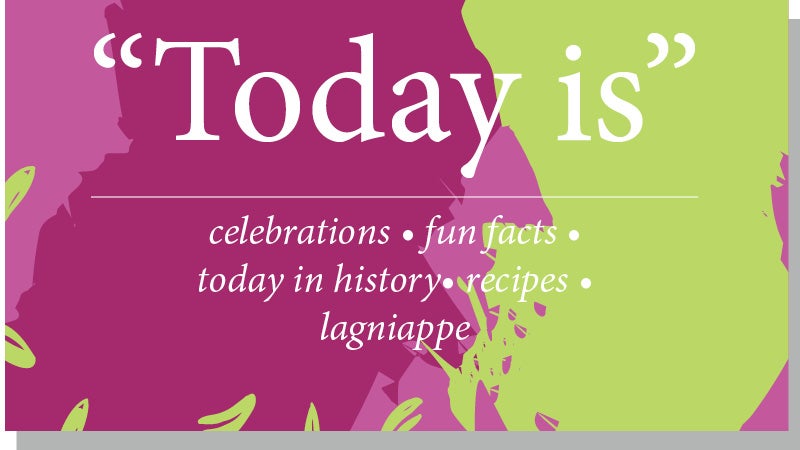Today is May 18
Published 8:00 am Tuesday, May 18, 2021
|
Getting your Trinity Audio player ready...
|
Beer has been produced by humans for longer than many people may know. Barley beer researchers have to traced beer production to present-day Iran in the fifth millennium BC. The making and drinking of beer also is noted in the written history of ancient Egypt and Mesopotamia.
Beer is one of the most popular alcoholic beverages available today and it is an important sector of the beverage industry. Business Insider says an estimated $661 billion worth of beer was sold around the world in 2017. In the United States alone, more than 7,000 new breweries opened in 2018, according to the Brewers Association. An additional 1,000 breweries were expected to open in 2019.
All beers are either lagers or ales, which are distinguished by the type of yeast used during the fermentation process (bottom- or top-fermenting, respectively). These beers are further labeled to describe the brew’s overall character, and oftentimes its place of origin, states BeerAdvocate.
The following are some of the most popular types of beers on the market.
· Bocks: BeerAdvocate says a German Bock is a lager that is stronger than your typical lager, with a more robust malt character. The hue of these beers ranges from dark amber to brown. Bocks were once brewed by Bavarian monks and were consumed at the end of Lent.
· Brown ales: These beers feature toasty flavors with malty overtones. They have a mid-range alcohol content and boast a hoppy bitterness. Brown ales are full-bodied beers that pair well with heavier foods, like red meats and stews.
· Dark lagers: Many dark lagers have malty, smooth, caramel flavors. They tend to have a mid-range alcohol level and relatively low bitterness profiles.
· India pale ales: IPAs boast strong hop bitterness and piney, floral flavors. They are especially popular among craft beer enthusiasts and brewers. IPAs tend to have a higher alcohol content than other pale ales. Imperial or double IPAs have even more pronounced flavors and higher ABVs.
· Pale ales: These beers are hoppy, but generally light, drinkable beers. Many easily pair with fish, poultry and cheeses.
· Pilsners and pale lagers: These similar, golden-colored beers are light in flavor and lower in alcohol content than other styles of beer. This style of beer was made popular in Germany, but many American brands like Coors and Budweiser have made pale lagers a favorite of the masses.
· Porters: Porters were developed in London in the early 18th century. These beers are well-hopped and dark in appearance due to the use of brown malt. The name grew from the popularity of the beer among street and river porters.
· Stouts: Stouts tend to be dark in color and are often mistaken as being heavy and strong. This isn’t always the case. Many stouts are complex and low in alcohol, according to All About Beer magazine. Dry stouts are well-known in Ireland. A distinguishing characteristic of a dry stout is its black, essentially opaque appearance.
Beer is a complex beverage that comes in many unique styles
Did you know?
The pinnacle of birthday celebrations, if there’s no piñata to break open, is when the birthday cake comes out and party attendees serenade the guest of honor. The song everyone harmonizes to is among the most widely recognized and well-loved tunes in the world. The “birthday song,” also known as “Happy Birthday to You,” is in the public domain in the United States and the European Union. The song originally was penned as a classroom greeting song titled “Good Morning to All,” written by sisters Mildred J. Hill and Patty Smith Hill. Both were educators and developed unique teaching strategies to assist students. The song was composed by Mildred and the lyrics were written by Patty to be used in kindergarten classrooms.
It is unclear who changed the lyrics and turned the song into a birthday ditty, as none of the earliest references to the song included credits or copyright notices. Two tales circulate regarding the eventual copyright of the song. One has The Summy Company registering a copyright in 1935, crediting authors Preston Ware Orem and Mrs. R. R. Forman. The other says Jessica Hill, sister to Mildred and Patty, who was working with publisher Clayton F. Summy Company, copyrighted and published “Happy Birthday to You” in 1935. Eventually Warner Chappell bought the company that was originally The Summy Company, and argued the birthday song was under copyright until 2030, making performances of the song illegal without paying royalties. However, a federal judge ruled in 2015 that Warner Chappell’s claim to a copyright on the song was not valid. The judge ruled its registration only covered a specific piano version, not the melody and lyrics. Therefore, “Happy Birthday to You” can be sung both privately and publicly without being subject to royalties or other restrictions.






